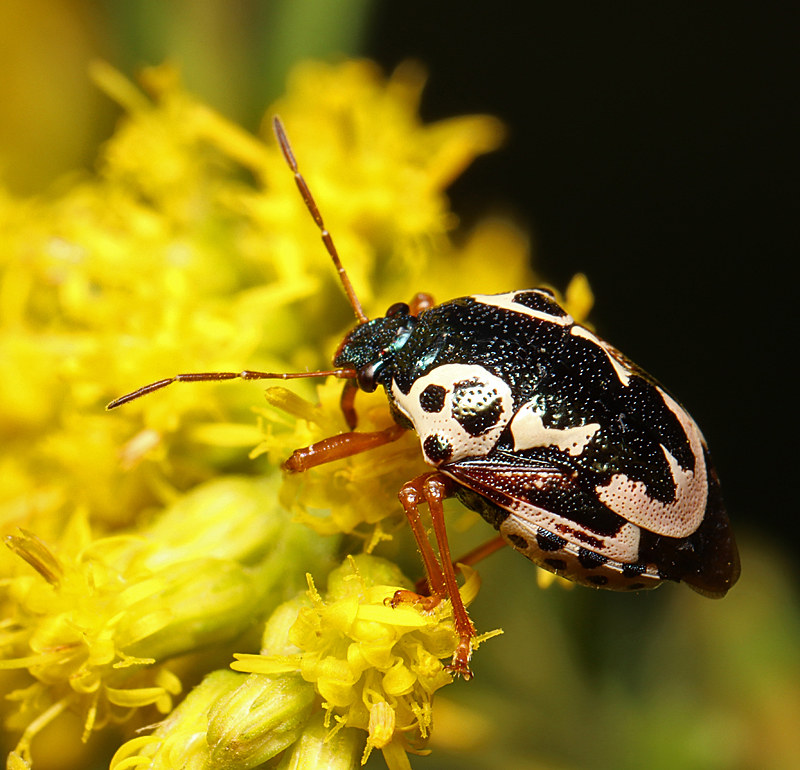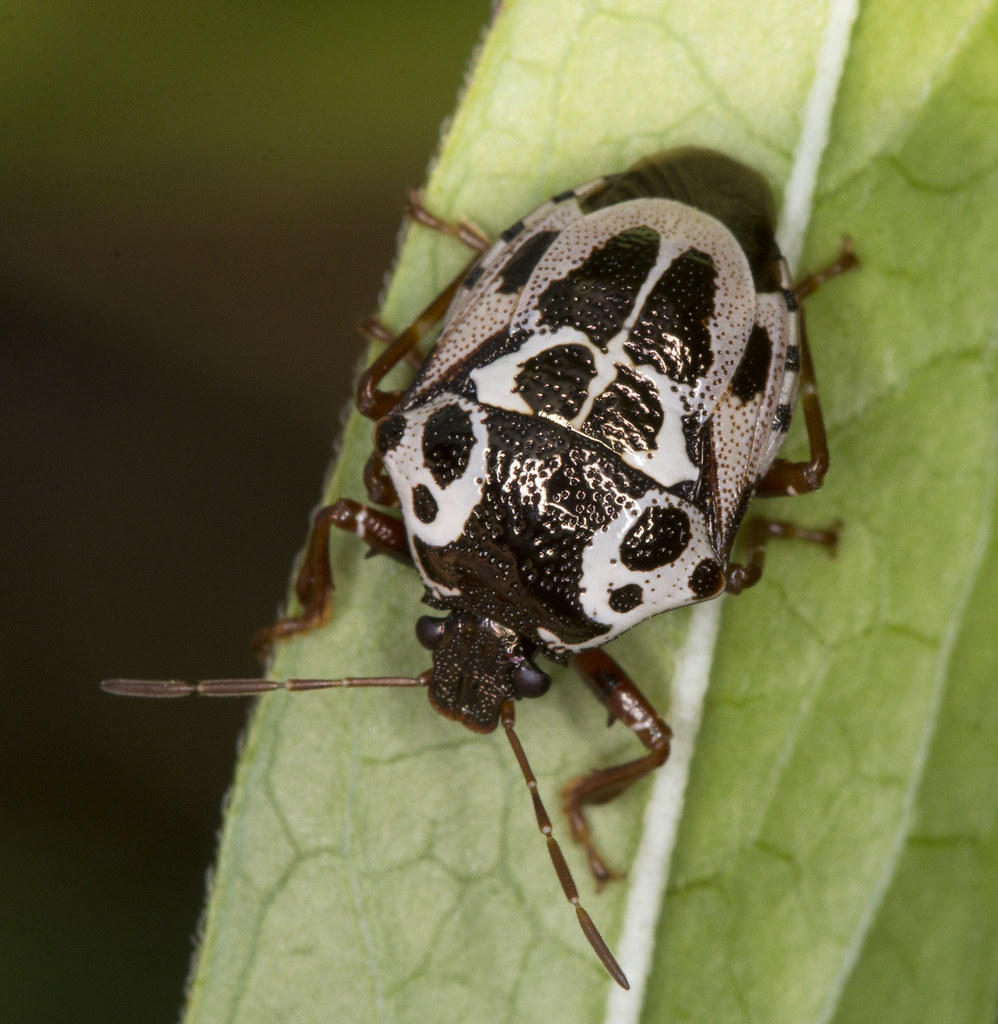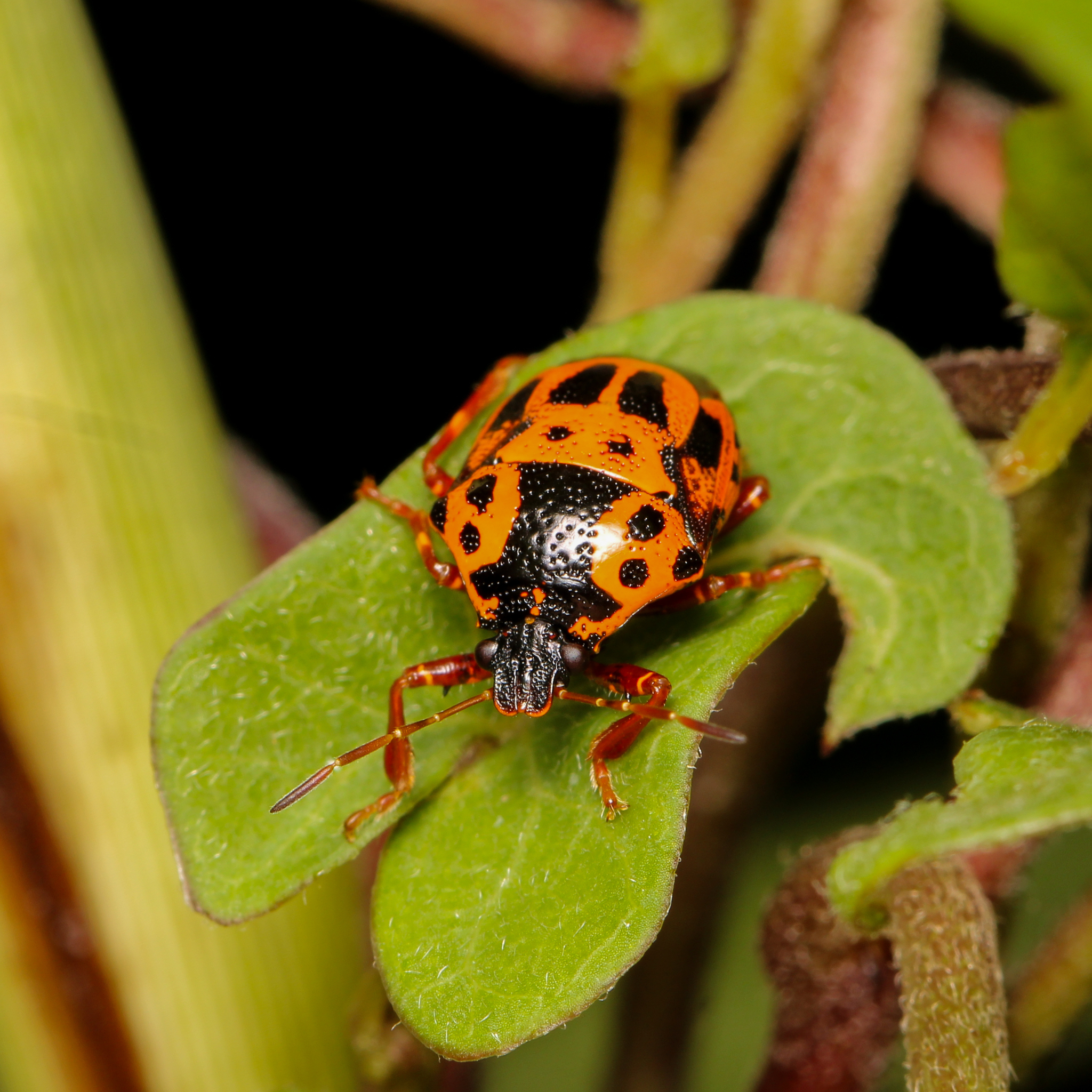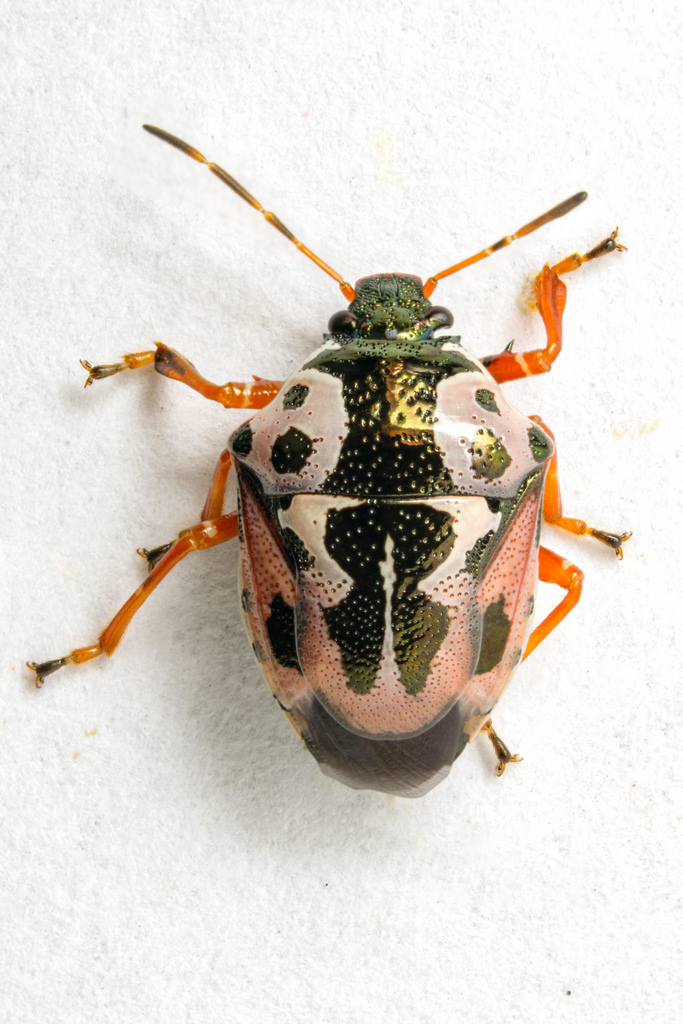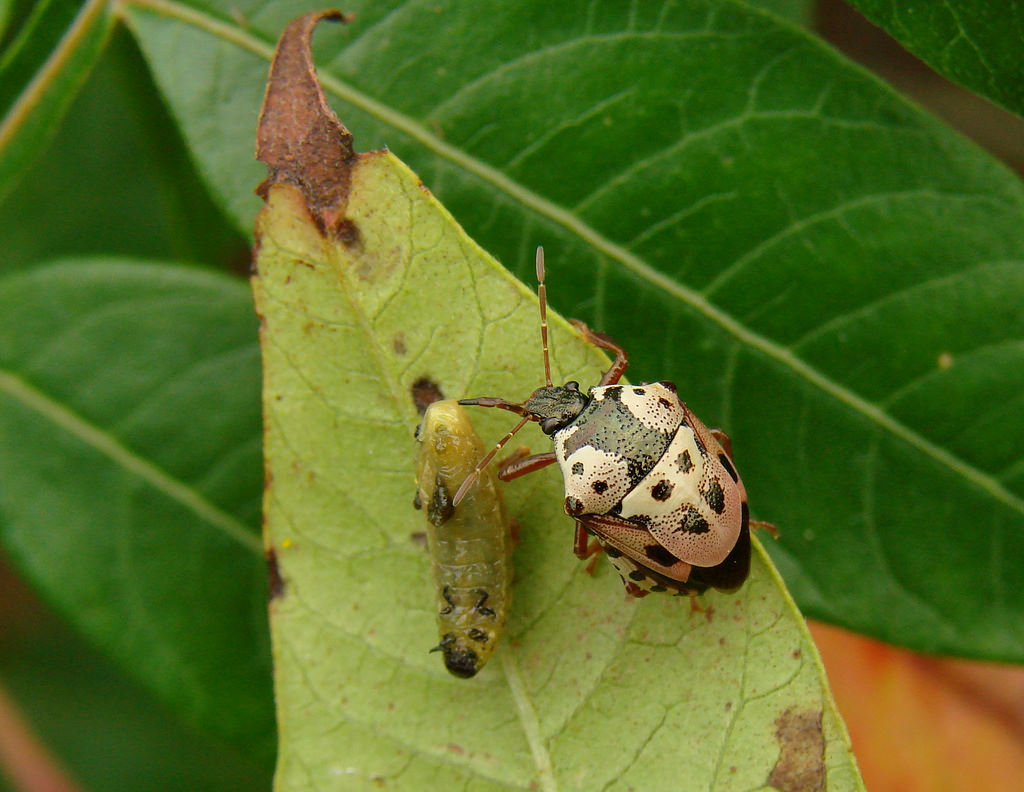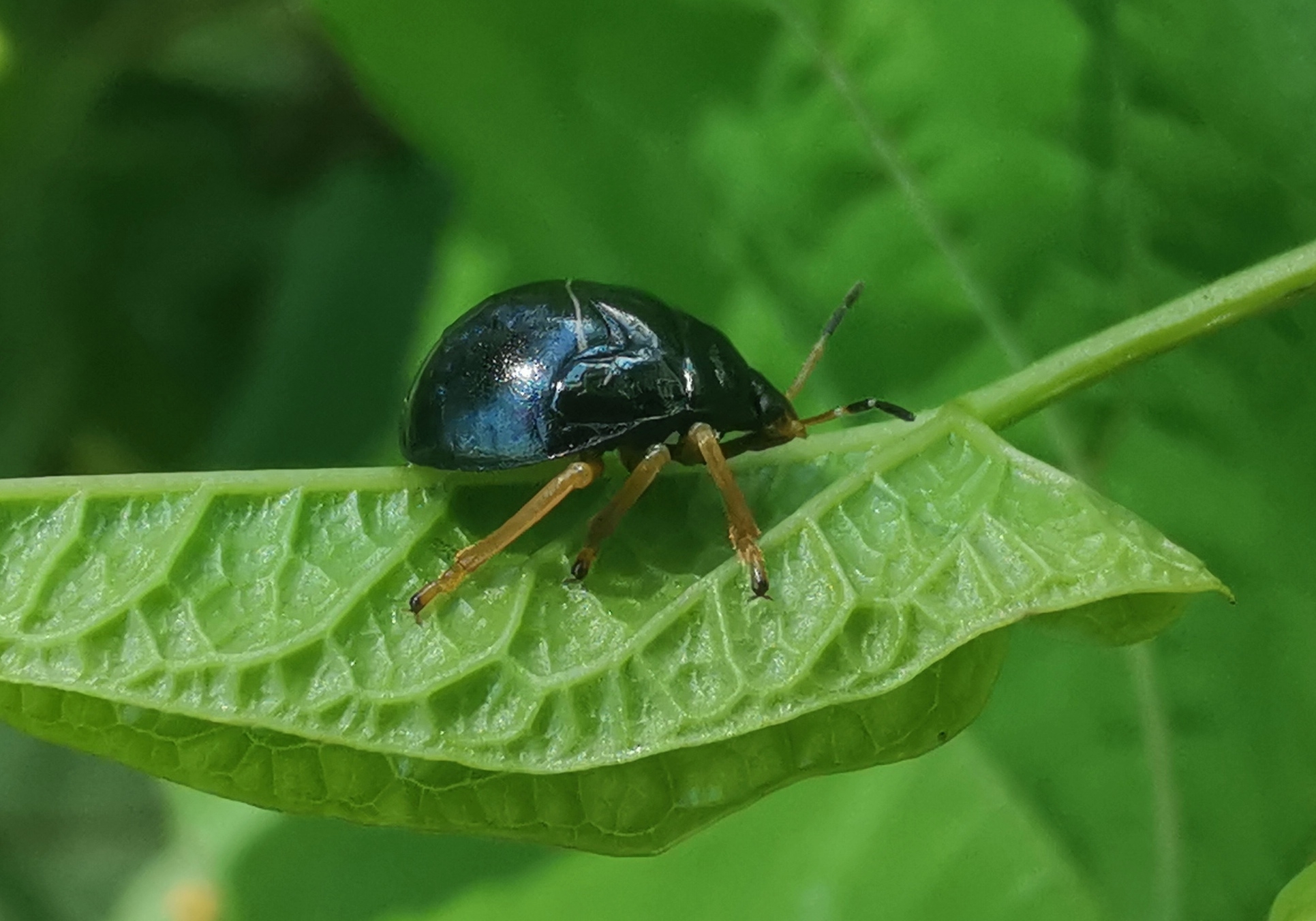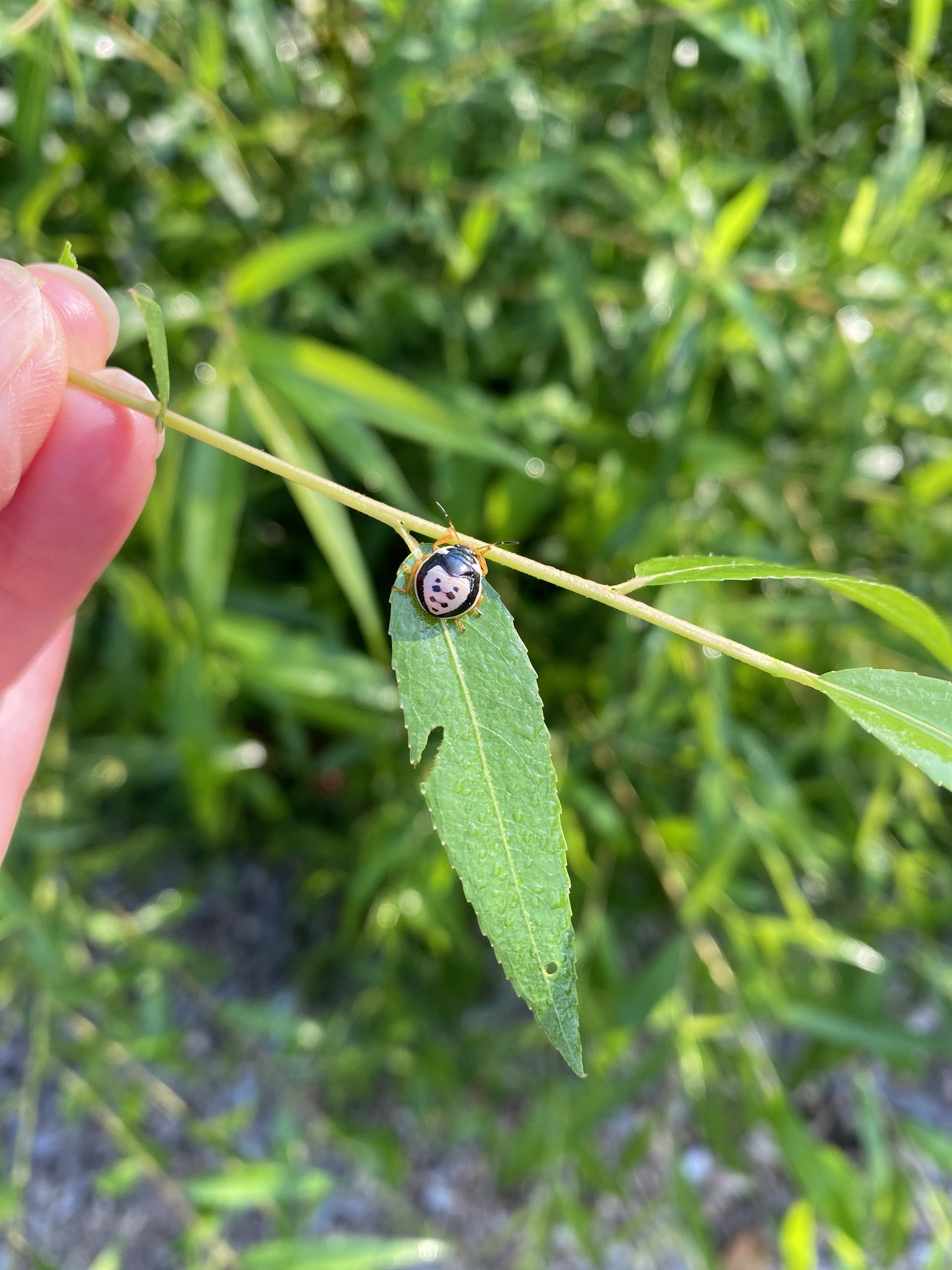Map Snapshot


















82 Records
Seasonality Snapshot
Use of media featured on Maryland Biodiversity Project is only permitted with express permission of the photographer.
An Anchor Stink Bug in Howard Co., Maryland (9/6/2015).
View Record Details
Media by
Bonnie Ott.
An Anchor Stink Bug in Kent Co., Maryland (9/5/2015). Verified by V. Belov/BugGuide.
View Record Details
Media by
Shannon Schade.
An Anchor Stink Bug in Prince George's Co., Maryland (10/1/2020).
View Record Details
Media by
Barbara Thurlow.
Anchor Stink Bug in Prince George's Co., Maryland (7/3/2021). (c) kristin-marie, some rights reserved (CC BY-NC).
View Record Details
Media by
kristin-marie via iNaturalist.
An Anchor Stink Bug in Dorchester Co., Maryland (7/6/2015).
View Record Details
Media by
Jim Brighton.
Anchor Stink Bug in Frederick Co., Maryland (9/17/2019). (c) botanygirl, some rights reserved (CC BY).
View Record Details
Media by
botanygirl via iNaturalist.
An Anchor Stink Bug in Harford Co., Maryland (8/2/2014). Verified by V. Belov/BugGuide.
View Record Details
Media by
Joshua Jones.
An Anchor Stink Bug in Frederick Co., Maryland (8/23/2015).
View Record Details
Media by
Steve Scholnick.
An Anchor Stink Bug in Cecil Co., Maryland (7/20/2019).
View Record Details
Media by
Shannon Schade.
An Anchor Stink Bug in Frederick Co., Maryland (9/19/2013).
View Record Details
Media by
Mark Etheridge.
Anchor Stink Bug in Howard Co., Maryland (8/29/2021). (c) Judy Gallagher, some rights reserved (CC BY-NC).
View Record Details
Media by
Judy Gallagher.
Anchor Stink Bug in Worcester Co., Maryland (6/27/2023). (c) Adrienne van den Beemt, some rights reserved (CC BY).
View Record Details
Media by
Adrienne van den Beemt.
Anchor Stink Bug in Prince George's Co., Maryland (8/3/2019). (c) Sergei Drovetski, all rights reserved.
View Record Details
Media by
Sergei Drovetski.
An Anchor Stink Bug in Carroll Co., Maryland (9/3/2018).
View Record Details
Media by
Peter Coffey.
Anchor Stink Bug in Carroll Co., Maryland (7/17/2023). (c) Adrienne van den Beemt, some rights reserved (CC BY).
View Record Details
Media by
Adrienne van den Beemt.
An Anchor Stink Bug in Anne Arundel Co., Maryland (8/6/2017).
View Record Details
Media by
Don Haskins.
An Anchor Stink Bug in Carroll Co., Maryland (9/4/2018).
View Record Details
Media by
Peter Coffey.
An Anchor Stink Bug in Carroll Co., Maryland (9/3/2018).
View Record Details
Media by
Peter Coffey.
An Anchor Stink Bug in Carroll Co., Maryland (9/3/2018).
View Record Details
Media by
Peter Coffey.
Anchor Stink Bug in Howard Co., Maryland (8/4/2021).
View Record Details
Media by
Bonnie Ott.
An Anchor Stink Bug nymph in Howard Co., Maryland (8/13/2016). Determined by John S. Ascher/BugGuide.
View Record Details
Media by
Derek Hudgins.
Anchor Stink Bug in Garrett Co., Maryland (Date obscured). (c) Josh Emm, some rights reserved (CC BY-NC).
View Record Details
Media by
Josh Emm.
Anchor Stink Bug in Harford Co., Maryland (9/29/2020). (c) kittyminder, some rights reserved (CC BY-NC).
View Record Details
Media by
kittyminder via iNaturalist.
Anchor Stink Bug in Prince George's Co., Maryland (8/2/2023). (c) Lisa Mayo, some rights reserved (CC BY-NC).
View Record Details
Media by
Lisa Mayo via iNaturalist.
Anchor Stink Bug in Howard Co., Maryland (7/11/2023). (c) Cheryl Stinchcomb, some rights reserved (CC BY).
View Record Details
Media by
Cheryl Stinchcomb via iNaturalist.
Anchor Stink Bug in Cecil Co., Maryland (9/10/2023). (c) aaronr, some rights reserved (CC BY-NC).
View Record Details
Media by
Aaron via iNaturalist.
Anchor Stink Bug in Howard Co., Maryland (7/11/2023). (c) Cheryl Stinchcomb, some rights reserved (CC BY).
View Record Details
Media by
Cheryl Stinchcomb via iNaturalist.
An Anchor Stink Bug nymph with prey in Baltimore Co., Maryland (8/23/2017).
View Record Details
Media by
Wendy Alexander.
Anchor Stink Bug in Caroline Co., Maryland (6/1/2024). (c) Frode Jacobsen, some rights reserved (CC BY-NC).
View Record Details
Media by
Frode Jacobsen.
Anchor Stink Bug in Howard Co., Maryland (7/15/2021). (c) Bonnie Ott, some rights reserved (CC BY-NC).
View Record Details
Media by
Bonnie Ott via iNaturalist.
Anchor Stink Bug nymph with prey in Garrett Co., Maryland (Date obscured). (c) Kyle Klotz, all rights reserved.
View Record Details
Media by
Kyle Klotz.
Anchor Stink Bug with prey in Anne Arundel Co., Maryland (7/30/2022). (c) Rin Wolfe, some rights reserved (CC BY-NC-SA).
View Record Details
Media by
rinwolfe via iNaturalist.
A Anchor Stink Bug nymph in Carroll Co., Maryland (8/24/2018).
View Record Details
Media by
Peter Coffey.
A 4th instar Anchor Stink Bug nymph in Carroll Co., Maryland (8/23/2018).
View Record Details
Media by
Peter Coffey.
A 4th instar Anchor Stink Bug nymph in Carroll Co., Maryland (8/23/2018).
View Record Details
Media by
Peter Coffey.
A 4th instar Anchor Stink Bug nymph in Carroll Co., Maryland (8/23/2018).
View Record Details
Media by
Peter Coffey.
Source: Wikipedia
| Stiretrus anchorago | |
|---|---|

| |
| Scientific classification | |
| Domain: | Eukaryota |
| Kingdom: | Animalia |
| Phylum: | Arthropoda |
| Class: | Insecta |
| Order: | Hemiptera |
| Suborder: | Heteroptera |
| Family: | Pentatomidae |
| Genus: | Stiretrus |
| Species: | S. anchorago
|
| Binomial name | |
| Stiretrus anchorago (Fabricius, 1775)
| |
Stiretrus anchorago, commonly known as the anchor stink bug, is a species of predatory stink bug in the family Pentatomidae.[1][2][3][4] It is found in Central America and North America.[1] It is known to prey upon Epilachna varivestis and Hypera postica. [5][6]
Subspecies
[edit]These five subspecies belong to the species Stiretrus anchorago:
- Stiretrus anchorago anchorago (Fabricius, 1775) i c g
- Stiretrus anchorago diana (Fabricius, 1803) i c g
- Stiretrus anchorago fimbriatus (Say, 1828) i c g
- Stiretrus anchorago personatus Germar, 1839 i c g
- Stiretrus anchorago violaceus (Say, 1828) i c g
Data sources: i = ITIS,[1] c = Catalogue of Life,[2] g = GBIF,[3] b = Bugguide.net[4]
References
[edit]- ^ a b c "Stiretrus anchorago Report". Integrated Taxonomic Information System. Retrieved 2018-05-02.
- ^ a b "Stiretrus anchorago species details". Catalogue of Life. Retrieved 2018-05-02.
- ^ a b "Stiretrus anchorago". GBIF. Retrieved 2018-05-02.
- ^ a b "Stiretrus anchorago Species Information". BugGuide.net. Retrieved 2018-05-02.
- ^ Waddill, Van; Shepard, Merle (1974). "Biology of a Predaceous Stinkbug, Stiretrus anchorago, (Hemiptera: Pentatomidae)". The Florida Entomologist. 57 (3): 249–253. doi:10.2307/3493252. JSTOR 3493252. Retrieved 2021-07-17.
- ^ Richman, David (1977). "Predation on the Alfalfa Weevil, Hypera postica (Gyllenhal), by Stiretrus anchorago (F.) (Hemiptera: Pentatomidae". The Florida Entomologist. 60 (3): 192. doi:10.2307/3493904. JSTOR 3493904. Retrieved 2021-07-17.
Further reading
[edit]- Arnett, Ross H. Jr. (2000). American Insects: A Handbook of the Insects of America North of Mexico (2nd ed.). CRC Press. ISBN 0-8493-0212-9.
- Aukema, Berend; Rieger, Christian, eds. (2006). Catalogue of the Heteroptera of the Palaearctic Region, vol. 5: Pentatomomorpha II. The Netherlands Entomological Society. ISBN 9071912280.
- Blatchley, W.S. (1926). Heteroptera, or true bugs of eastern North America, with especial reference to the faunas of Indiana and Florida. Nature Publishing. doi:10.5962/bhl.title.6871.
- Henry, Thomas J.; Froeschner, Richard C., eds. (1988). Catalog of the Heteroptera, or True Bugs, of Canada and the Continental United States. E. J. Brill. ISBN 0-916846-44-X.
- McPherson, J.E. (1982). The Pentatomoidea (Hemiptera) of Northeastern North America. Southern Illinois University Press.
- Paiero, S.M.; Marshall, S.A.; McPherson, J.E.; Ma, M.S. "Stink bugs (Pentatomidae) and parent bugs (Acanthosomatidae) of Ontario and adjacent areas...". Canadian Journal of Arthropod Identification. 24: 1–183.
- Rider, David A. (2012). "The Heteroptera (Hemiptera) of North Dakota I: Pentatomorpha: Pentatomoidea". The Great Lakes Entomologist. 45 (3–4): 312–380. ISSN 0090-0222.
- Walker, Francis (1871). Catalogue of the Specimens of Hemiptera Heteroptera in the Collection of the British Museum, pt. IV. British Museum. doi:10.5962/bhl.title.9254.
External links
[edit] Media related to Stiretrus anchorago at Wikimedia Commons
Media related to Stiretrus anchorago at Wikimedia Commons


